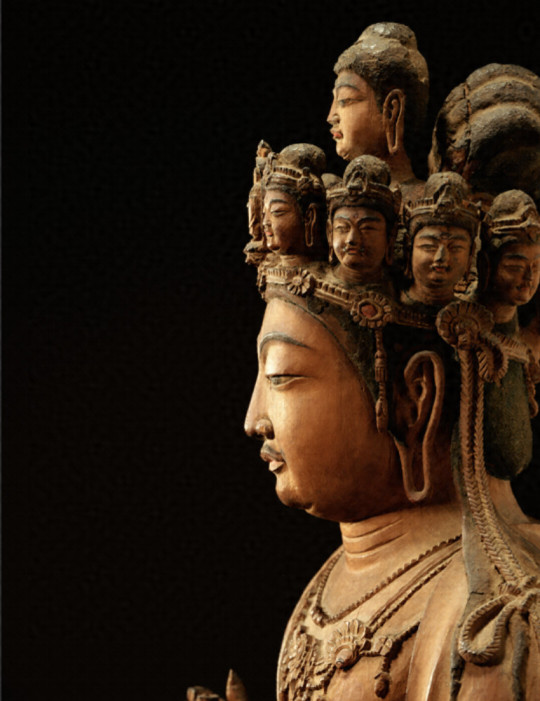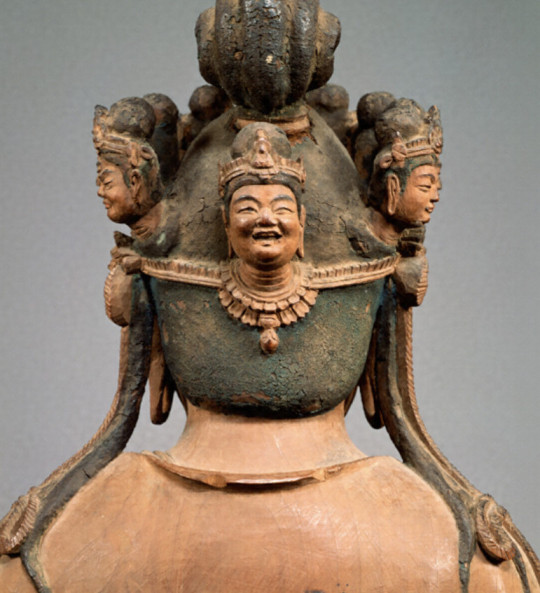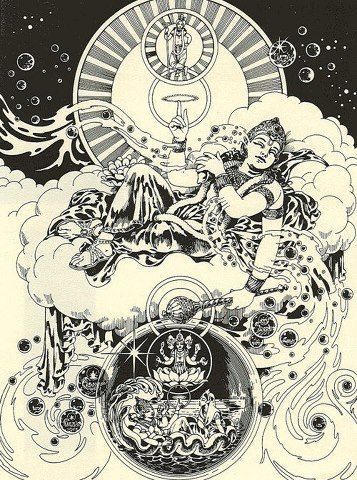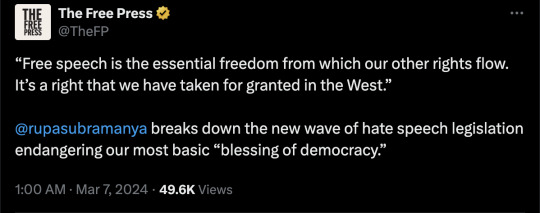#。・:*:・゚rupa
Text
OKAY LET ME JUST FREAK OUT ABOUT THE CHARACTER DESIGNS REVEALED IN THE NEW VISUAL




First Upa, Rupa and Carla, their designs look like their original designs, but with hints of red. Since they're so far away, I can't make out most of their designs properly (like highlights and such) but this means BOY meets GIRL is going to be adapted in the remake, aka one of my favorite finales in fiction of all time, so hell yea!!
Next, Inaba. I LOVE his pink highlights and it makes sense since he's not a regular human (he's a bunny who works at the fate production bureau after all). Also this means Inaba arc gets adapted, aka another win for UY fans!!
Shingo! His design looks exactly how it does in the manga (and original anime) so nothing special here, but this means they're going to adapt 'Electric Jungle' aka another win!!
Next, Nagisa, He looks really pale, but then I remembered he's a ghost so yea 😅, also I like the pink.
And finally my silly baby Asuka! I love her purple highlights, it's similar to Ryoko's, but maybe it was intentional to show her crazy relationship with her brother. Also, I like her purple leggins, although I wish they kept it bluish green, but oh well.
ANYWAYS THE HYPE IS REAL, JANUARY GONNA GO HARD!!!
#urusei yatsura#うる星やつら#urusei yatsura 2022#rupa#carla#upa#inaba#shingo#nagisa shiowatari#asuka mizunokoji#HYPEHYPEHYPE
42 notes
·
View notes
Text
Playlist Tag Game!!
Thank you for tagging me @mallory-x !! (Was tagged on my art blog!)
Shuffle your favorite playlist and post the first five songs that come up: (I'm shuffling my general 2024 playlist!)
Maps - Yeah Yeah Yeahs
Someone Great - LCD Soundsystem
Kiss & Tell - Brian Ferry
Punk Rock Loser - Viagra Boys
East West Shuffle - Rupa
No pressure tags!! @teejaystumbles @toleima @delta-pavonis @valeriianz @norfre @nolanporfirio @3-inch-sam @portalpanda :]
#tag game#rex speaks#didnt know who to tag so im just gonna tag. everyone#a very random selection of songs haha#rupa is a lot of fun!! she's one the only bengali disco singers i know of and she's so cool!! just like me fr
13 notes
·
View notes
Text
by Cory Franklin
Saira recently said that she was “genuinely terrified for Palestinian, Arab, Muslim, South Asian and black patients” because of the number of “Zionists” among American doctors and nurses. Shockingly, some people construed those remarks as being antisemitic. You know how touchy those people can be.
Saira might have had some trouble were it not for another woman who leapt to her defense. And this woman is a bona fide physician with some street cred.
Dr. Rupa Marya, is an associate professor of medicine at University of California San Francisco. According to her UCSF profile, she was recognized in 2021 with the Women Leaders in Medicine Award by the American Medical Student Association. A reviewer for the American Medical Association’s Organizational Strategic Plan to Embed Racial Justice and Advance Health Equity, Rupa was appointed by Governor Gavin Newsom to the Healthy California for All Commission, to create a model for universal healthcare in California. The kind of can-do person who has her finger on the pulse of modern medicine.
(Siena College, in upstate New York, recently named Dr. Marya a featured speaker for a March lecture series. On its website, Siena said it was “proud to welcome” Rupa to speak March 13 on the topic of “Decolonizing Medicine: Transforming our World Through Medicine, Activism, and Music.”)
And true to fashion, Rupa recognizes where the real problem is. In support of Saira Rao, Rupa wrote, “The presence of Zionism in US medicine should be examined as a structural impediment to health equity. Zionism is supremacist … how does their outlook/position impact priorities in US medicine? … people who hold any supremacist position are not going to be doctors who advance health equity. They are part of and support structures that obstruct it. This may be an important reason why, in spite of 20 years of investment into health equity, we’ve closed no gaps in health disparities.”
See? Hitler and Stalin got it right – the ones keeping medicine down are those Jews and their medicine. All those problems in health care you hear about? Yep, Jews. (As someone pointed out, Saira and Rupa could save everyone a lot of time by cutting to the chase – forget about the “Zionist” stuff and just say “Jews.”)
19 notes
·
View notes
Text
And then, because he’d spent a thousand years looking for the smallest of clues with no success, Eruhaben asked, “Do you know what language it is?”
Cale’s lips pressed together in a thin line as reddish-brown eyes glanced back at Eruhaben’s soulmark. He seemed to be debating something, so Eruhaben waited patiently, until eventually Cale sighed, seemingly coming to a decision.
“It’s Korean,” he said.
Alternatively, Eruhaben has Cale's name tattoed as his soulmark, but he doesn't realize this because it's written in Korean.
#❤️❤️❤️#trash of the count's family#cale henituse#eruhaben#soulmarks#soul parent eruhaben#papa eru#rupa#soft#fluff#lots of it#platonic soulmates#feelings
9 notes
·
View notes
Photo

The Quest for Buddhism (106)
Buddhist cosmology
Mental Factors in Buddhism (Ref)
Mental factors (Skt: caitasika, Pali: cetasika), in Buddhism, they are identified within the teachings of the Abhidhamma (Buddhist psychology, 3rd century BCE and later). They are defined as aspects of the mind that apprehend the quality of an object, and that have the ability to colour the mind. Alternate translations for mental factors include "mental states", "mental events", and "concomitants of consciousness". Within the Abhidhamma, the mental factors are categorised as formations (Skt: samskara) concurrent with mind (Skt: citta).
Mental factors are aspects of the mind that apprehend the quality of an object and have the ability to colour the mind.
The caitasika dharma, means phenomena arising from the mind, suggesting that the mental factors are not primary to the mind but arise within a larger framework. A mental factor, again, is defined as the aspect of the mind that apprehends a particular quality of an object. Because it is characterised by the qualities of activity and non-neutrality, it has the ability to color the mind in dependence on the way it manifests. Hence, a feeling of desire from seeing what is conceived as a beautiful object affects the other mental factors that are present at that time, and this colors the whole mind.
The relationship between the main mind (Sanskrit: citta) and the mental factors can be described by the following metaphors:
The main mind is like screen in a cinema, and the mental factors are like the images projected on the screen. In this analogy, we typically do not notice the screen because we are so caught up on the images.
The main mind is like a king who sits passively on a throne, and the mental factors are like the king's busy ministers. It was suggested that the main distinction between the mind and mental factors is that the mind apprehends an object as a whole, whereas mental factors apprehend an object in its particulars.
[Photo top & below: Eleven-faced Avalokitesvara Bodhisattva, Nara National Museum, Japan]

仏教の探求 (106)
仏教の宇宙論
心所(しんじょ)〜 仏教における心的要因(参照)
心所 (しんじょ、梵: チャイタシカ、巴: チェータシカ) とは、仏教における心的要因のことを意味しており、阿毘達磨 (あびだつま、梵: アビダルマ、巴: アビダンマ、紀元前3世紀以降の『ダルマの研究(仏教心理学)』)の教えの中で識別されいる。それらは目的の質を理解し、心を着色する機能がある心の側面として定義される。心所の代替訳としては「精神状態」、「意識」の付随物および「心的なでき事を含んでいる」などが含まれる。アビダンマの中では、心所は、本心 (梵語:シッタ)と同時に形 (梵語:サムスカーラ)として分類される。
心所の法 (梵: チャイタシカ・ダルマ) とは、対象の質を理解する心の側面であり、心を彩る能力を持つものである。
心所 (心的要因) は、心から生じる現象を意味し、心の要素が一義的ではなく、より大きな枠組みの中で生じていることを示唆している。この心的要素とは、やはり、ある対象の特定の性質を理解する心の側面と定義される。それは活動性と非中立性という性質を持つため、その現れ方によって心を彩ることができる。したがって、美しいと思ったものを見て欲求を感じると、そのときの他の心的要素に影響を与え、心全体を彩ることになる。
本心 (梵語:シッタ)と心所 (心的要因)の関係は、次のような比喩で表現することができる:
本心は映画館のスクリーンのようなものであり、心的要因はスクリーンに映し出される映像のようなものである。この例えの場合、私たちは映像に夢中でスクリーンに気づかないのが普通である。本心は玉座に受身で座っている王のようなもので、心的要因は王の周りの忙しい大臣たちのようなものである。心と心的要因の主な違いは、心が対象を全体として理解するのに対し、心的要因は対象をその特殊性において理解することであると指摘されている。
#mental factors#caitasika#abhidhamma#buddhist psychology#buddhism#philosophy#mindfulness#meditation#rupa-jhana#avalokitesvara bodhisattva#nature#art
146 notes
·
View notes
Text









『#うる星やつら45周年企画』 ⇄ “#Urusei Yatsura 45th Anniversary Project”
1. Shun Matsuena 2. Takuya Mitsuda 3. Mitsuharu Yanamoto 4. Yutaka 5. Yūji Yokoyama 6. Watari 7. Mitsuru Adachi 8. Takashi Shiina 9. Kazuhiro Fujita
#Shun Matsuena#Syun Matsuena#Takuya Mitsuda#Mitsuharu Yanamoto#yutaka#Yūji Yokoyama#watari#mitsuru adachi#Takashi Shiina#Kazuhiro Fujita#urusei yatsura#lum invader#ran#ataru moroboshi#benten#oyuki#うる星やつら#ryuunosuke fujinami#carla#rupa#karura
11 notes
·
View notes
Note
Gene and Tina project, for the WIP game please!
that is my fic where gene and tina are assigned to work on a project for the school science fair together that is like my attempt to write a canon-type episode focused on them since we mostly likely won't get one in the show (which you know since you helped me come up with some of the idea for it haha)
i dont want to post too much of the actual fic bcuz i dont want to spoil anything (and also because i don't have a ton actually written at the moment) but here's a fun list I made of all the relevant/background pairings for the science fair and their chosen project/topic :)
gene and tina - how does music affect your mood
darryl and tammy - do different colors of light affect the rate of photosynthesis
rupa and jimmy jr. - building a robotic arm
jocelyn and lenny destefano - which brand of bubblegum blows the biggest bubble
#the pairing of jimmy jr and rupa makes me laugh theyre so dumb <3 also darryl and tammy is a dynamic i would KILL to see in an actual ep#they would drive each other crazy#their project was darryl's idea and almost exclusively darryl's work if it was not obvious#ask#bob's burgers
7 notes
·
View notes
Video
youtube
Roundabout - Yes (1971)



Jai Guru Dev Roundabout - Yes (1971)
https://youtu.be/ihFypISk2oM?si=DhVm-zUEjp-ERiRH via @YouTube
#g
#youtube#Neem Karoli Baba#Maharaji#70s Music#Prog Rock#Prog#Yes Band#Vishnu#Mahavishnu#Ram Dass#Be Here Now#Spiritual Awakening#Viraat Rupa
7 notes
·
View notes
Text










kareena kapoor khan as rupa in laal singh chaddha 🤍
proving yet again that she is one of the best bollywood has!
#kareenakapoor#bollywood#bebo#kareenakapoorkhan#kareena kapoor#kareena kapoor khan#laal singh chaddha#rupa d'souza#underrated#gif set
54 notes
·
View notes
Text
I did some translations for girls band cry seiyuus so I'm posting them on here too!
youtube
youtube
2 notes
·
View notes
Text
These 3 Stories are the best arcs in Urusei Yatsura, period.



The first two arcs are fantastic in terms of story telling and character growth, while the third one perfectly captures UY’s chaotic spirit.
#electric jungle and deranged marriage are honorable mentions#and personally I like the flowers of love and courage too because of shinobu’s character development#urusei yatsura#うる星やつら#urusei yatsura manga#ill tag everyone in the images#lum#ataru moroboshi#ten#rupa#oyuki#benten#ran#shutaro mendo#rei#kotatsu neko#cherry#sakura#shinobu miyake#ryunosuke fujinami#principal#onsen mark#btw the Ranma artsyle is soooo cute!#god i love them sm#official art
60 notes
·
View notes
Text

Srila Rupa Goswami
7 notes
·
View notes
Text

By: Rupa Subramanya
Published: Mar 6, 2024
One of the first things you learn—or should learn—in Civics 101 is that there is no freedom at all without freedom of expression. Free speech is the essential freedom from which our other rights flow. It’s a right that we have taken for granted in the West.
But a new wave of hate speech laws has changed that. In English-speaking countries with long traditions of free expression—countries like Canada, Britain, and Ireland—this most basic freedom is under attack.
Take Canada. Civil liberties groups north of the border are warning a new bill put forward by Justin Trudeau’s government will introduce “draconian penalties” that risk chilling free speech. How draconian? The law would allow authorities to place a Canadian citizen under house arrest if that person is suspected to commit a future hate crime—even if they have not already done so. The legislation also increases the maximum penalty for advocating genocide from five years to life.
These punishments depend on a hazy definition of hate that Noa Mendelsohn Aviv, executive director and general counsel of the Canadian Civil Liberties Association, has warned could blur the line between “political activism, passionate debate, and offensive speech.”
The proposed law is in keeping with the Trudeau government’s broader hostility to free expression. I’ve reported before for The Free Press on this censorious turn in my country, from the crackdown on the trucker protesters to the backdoor regulation of online speech. And, testifying before the U.S. Congress in November, I urged Americans to treat Canada’s war on free expression as a cautionary tale. Increasingly, though, what’s true of Canada is true across the English-speaking world.
In Ireland, the government is pressing ahead with controversial new restrictions of online speech that, if passed, would be among the most stringent in the Western world.
The proposed legislation would criminalize the act of “inciting hatred” against individuals or groups based on specified “protected characteristics” like race, nationality, religion, and sexual orientation. The definition of incitement is so broad as to include “recklessly encouraging” other people to hate or cause harm “because of your views” or opinions. In other words, intent doesn’t matter. Nor would it matter if you actually posted the “reckless” content. Merely being in possession of that content—say, in a text message, or in a meme stored on your iPhone—could land you a fine of as much as €5,000 ($5,422) or up to 12 months in prison, or both.
As with Canada’s proposed law, the Irish legislation rests on a murky definition of hate. But Ireland’s Justice Minister Helen McEntee sees this lack of clarity as a strength. “On the strong advice of the Office of the Attorney General, we have not sought to limit the definition of the widely understood concept of ‘hatred’ beyond its ordinary and everyday meaning,” she explained. “I am advised that defining it further at this juncture could risk prosecutions collapsing and victims being denied justice.”
In Britain, existing online harm legislation means that tweeting “transwomen are men” can lead to a knock on the door from the cops. Now the governing Conservative Party is under pressure to adopt a broad definition of Islamophobia as a “type of racism that targets expressions of Muslimness or perceived Muslimness.”
Other parties have adopted this definition, and free-speech advocates in Britain worry that it is only a matter of time until a Labour-run government codifies the definition into legislation. To do so, they argue, would mean the introduction of a de facto blasphemy law in Britain.
These growing restrictions on speech across the Anglosphere are making the United States, with its robust First Amendment protection of speech, an outlier—though not for the Biden administration’s lack of trying.
In April 2022, the Department of Homeland Security announced the creation of a “Disinformation Governance Board” to “coordinate countering misinformation related to homeland security.” There was an immediate pushback from free-speech advocates, who pointed to the obvious fact that this new body would necessarily impinge on protected First Amendment rights. The administration dropped the idea a few months later.
Then, in September 2023, a federal court ruled that the Biden administration violated the First Amendment when they “coerced or significantly encouraged social media platforms to moderate content” during the pandemic.
Jay Bhattacharya was one of the scientists on the winning side of that case. Writing in The Free Press after the ruling, he recalled being grilled on the First Amendment during his citizenship test when he was nineteen. “The American civic religion has the right to free speech as the core of its liturgy,” he wrote. “I never imagined that there would come a time when an American government would think of violating this right, or that I would be its target.”
The trouble isn’t just the Biden administration.
Listen to Barbara McQuade, an MSNBC legal analyst and professor at the University of Michigan Law School. Her new book, Attack from Within, details “how disinformation is sabotaging America.” America’s “deep commitment to free speech in our First Amendment. . . makes us vulnerable to claims [that] anything we want to do related to speech is censorship,” said McQuade in an interview with Rachel Maddow last week.
A worrying number of Americans appear to be sympathetic to McQuade’s argument. A 2023 Pew survey found that just 42 percent of voters agreed that “freedom of information should be protected, even if it means false information can be published.”
McQuade has it backward. The First Amendment is a feature, not a bug; a strength, not a vulnerability; and the bedrock of American freedom and flourishing.
Across the English-speaking world, we once took our civil liberties for granted. Freedom of speech was understood as a blessing of democracy, not something that needed to be fought for every day. We thought that opaque and vague laws were used by those in power to punish their political or ideological opponents only in illiberal autocracies such as Russia or China. But we were wrong. And those now fighting censorship in Canada, or Britain, or Ireland, wish they had a First Amendment of their own to fall back on.
==
Calls for censorship always come from those in power to silence dissent.
You're not supposed to notice that although they're doing it in the name of - and using the language of - "victimhood," those calling for censorship and restriction of speech are the ones who hold power from that claim to victimhood.
#Rupa Subramanya#free speech#freedom of speech#victimhood culture#victimhood#blasphemy#blasphemy laws#islamophobia#civil liberties#freedom of expression#criticism of islam#criticism of religion
5 notes
·
View notes
Photo

The Quest for Buddhism (109)
Buddhist cosmology
Mental Factors in Buddhism - The relationship between Panchangika and the 5 hindrances
The Panchangika(Ref3), which are the components of the Mental Factors (Skt: caitasika, Pali: cetasika Ref2) in the Rupa-jhana(Ref), and the five Hindrances (Ref4), which are the mind poisons that hinder them, are just in a trade-off (interchangeable) relationship.
The correspondence between the Panchangika and the 5 Hindrances is as follows:

Therefore, by suppressing the five hindrances through the 4 immeasurable minds (“meditation on compassion”) and the Buddhanussati ("Buddha-mindfulness"), while at the same time raising the panchangika, it then becomes easier to enter into jhana as ‘upacara-samadhi’ as wll as ‘appana samādhi’ which is the complete immersion of the mind in the meditation on the object and the stability of all 4 rupa jhana.
Buddhanussati (Skt: Buddhanusmrti), meaning "Buddha-mindfulness", is a common Buddhist practice in all Buddhist traditions which involves meditating on the virtues of the Buddha, mainly Gautama Buddha as the meditation or contemplation subject. Upacara-samadhi is a state of concentration in Theravada Buddhism that is equivalent to zen meditation (jhana Ref5). It is one of the Rupa-jhana (samadhi).

仏教の探求 (109)
仏教の宇宙論
心所(しんじょ)〜 五禅支と五蓋の関係
四禅 (しぜん、梵: ルーパデイヤーナ参照)における心所 (しんじょ、梵: チャイタシカ、巴: チェータシカ参照2)の構成要素である五禅支(ごぜんし、梵: パンチャンギガ参照3)と、その妨げとなる煩悩としての五蓋 (ごがい、巴: パンチャ・ニーヴァラナーニ 参照4)は、ちょうど、入れ替えの関係にある。
五禅支と五蓋の対応関係は、以下の通り:

したがって、四無量心 (しむりょうしん、梵: アプラマーニャ, 巴: アッパマナー、「慈悲の瞑想」) や仏隨念 (ぶつずいねん、梵:ブッダーヌッサティ、「仏心」) などによって五蓋 (ごがい)を抑えつつ、五禅支(ごぜんし)を高めていくことで、近行定 (きんぎょうじょう、巴:ウパチャーラ・サマーディ)、そして安止定 (梵: アッパーナ・サマーディ=対象の瞑想に心を完全に没頭させ、四禅すべてが安定している状態) としての禅定 (梵: デイヤーナ、巴: ジャーナ参照5)に入って行きやすくなる。
仏隨念 (ぶつずいねん)とは、瞑想または観想の対象として主にゴータマ仏陀の美徳を瞑想する、すべての仏教の伝統に共通する修行法のことである。近行定 (きんぎょうじょう、巴:ウパチャーラ・サマーディ)とは、上座部仏教において、禅定 (梵: デイヤーナ、巴: ジャーナ) に準じる集中状態のこと。定 (じょう、巴、梵: サマーディ) の四段階のひとつである。
#zen#mindfulness#buddhism#dhyana#jhana#rupa-jhana#meditation#buddhist cosmology#samadhi#panchangika#5 hindrances#philosophy#nature#art#mindset
133 notes
·
View notes
Text
Slmt mlm area melaka ade x sesiapa yg nk 3some ke girls yg gersang ke xkira status single mom ke yg berumur pon boleh contact sy di no 01113121907 call/whatsapp zul 30th bujang stay krubong melaka... Zul x kisah umur korang berapa
6 notes
·
View notes


